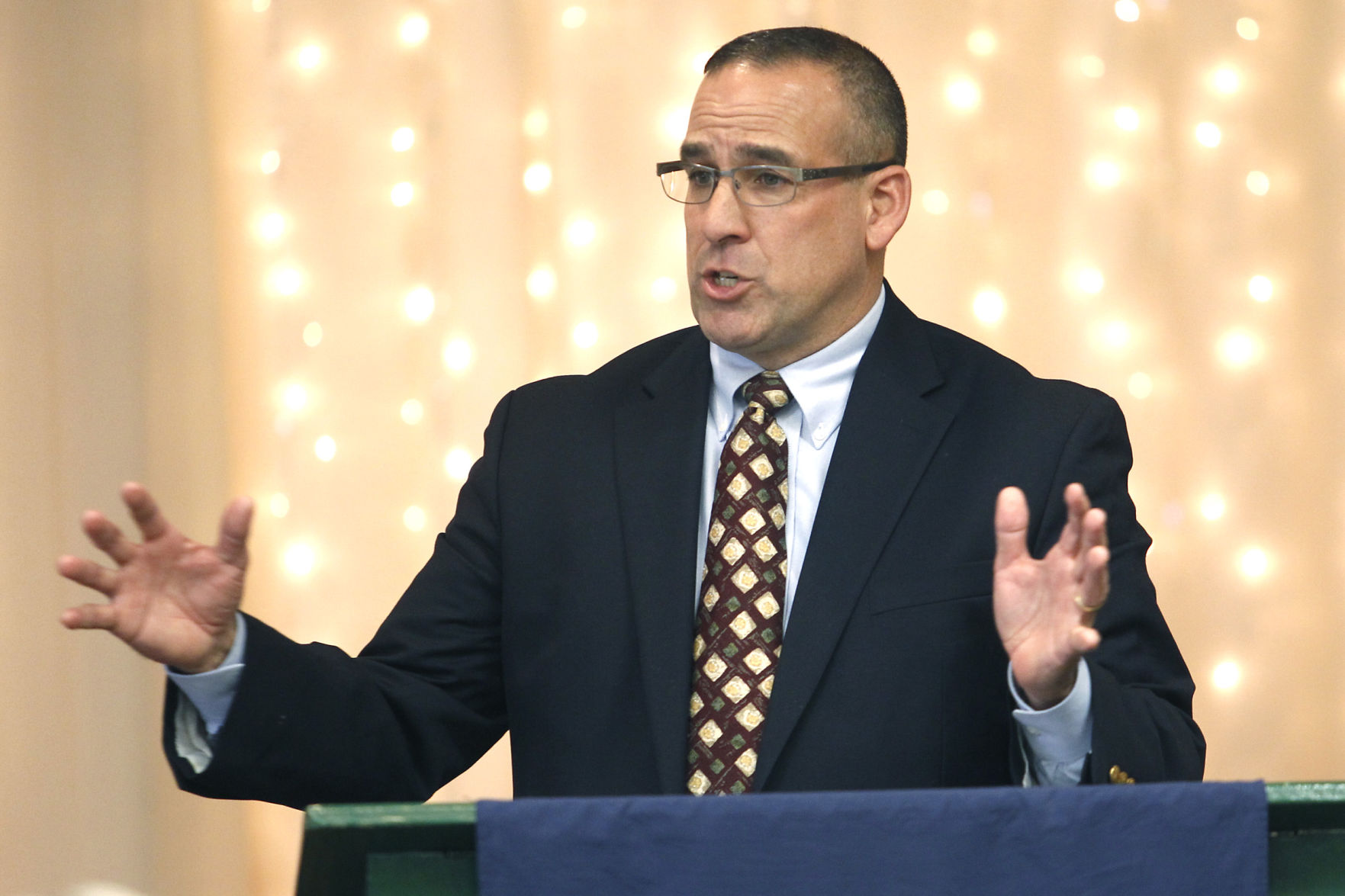
Dale Minyo, the familiar voice of the Ohio Ag Net broadcasts, was the featured speaker at Thursday’s
Kiwanis meeting held at Stone Ridge Country Club.
He made the 99-mile trip from his Morrow County home to share some of his knowledge and thoughts
regarding the state of agriculture. The broadcaster had already put in a full day’s work prior to making
the drive. He rises at 3 a.m. daily to gather information and prepare his broadcasts, which are heard
across the state on various radio stations.
His studio is located in the basement of his Mount Gilead home. It was not Minyo’s first visit to Bowling
Green, as he has previously brought his remote broadcast to Riker Farm Seed and the Wood County Fair.
On Thursday’s drive, he experienced Ohio’s fickle weather firsthand, as he said the temperature dropped
23 degrees while he was behind the wheel.
He used the point of the temperature drop to illustrate some of the challenges faced by the farm
community on a regular basis.
For example, early predictions last year for crops were very diminished. Late summer rains, however,
boosted the soybean crops to record levels.
“The challenge for many growers is what do farmers get to do and what are they allowed to do?” Minyo
said.
He indicated that in any industry, farming included, you will find one bad apple or two, but “the vast
majority of farmers live on their land and/or rent it and they want to do the right things with that
land.”
He added that recent surveys have found a majority of farmers being “optimistic” about changes with the
presidential administration as they are hopeful of getting rid of some of the rules that they say
restrict their ability to make a living.
Despite the dependence on the weather and things they cannot control, Minyo said the biggest challenge
facing farmers today is when and how to market their crops.
He illustrated how last year there was a point in time when farmers could have advance sold their
soybeans for $12 per bushel. However, that was early in the season when things looked bleak. By the time
the growers realized they would have the beans, prices had dropped in some cases to under $10 per
bushel. One forecaster indicated this year’s prices could fall to $6 per bushel, in a worst-case
scenario.
It’s a risk-versus-reward type of strategy and predicting what is going to be the normal.
“A farmer might ask, ‘How do I sell a crop I do not yet have?’ There is not much normal, there is not
much predictable,” Minyo said.
Despite all the challenges, overall the United States still has the lowest food dollar pricing in the
world.
He also explained that part of the challenge is educating people on the value of agricultural products
and pricing.
He briefly addressed products that use genetically modified organisms. He explained that seedless
watermelons, for example, are technically genetically modified. That’s why they are seedless.
“We have the ability to plant crops that don’t need as many chemicals,” the broadcaster said.
In those cases, GMO seeds have the advantage of not using as much, if any, chemical fertilizers or
pesticides.
He also illustrated how wheat production has dropped in the state from up to 1.3 million acres down to
nearly 600,000 acres last year. The latest report shows this year there are only 490,000 acres planted,
down 90,000 acres from last year’s lowest total since 1999.
He said a major contributor to that loss of acreage is that wheat is no longer profitable in the United
States because GMO crops are not able to be planted here, though they are the preferred crops in other
nations.
“We can’t compete,” he said. “Many feel if we could use technology to make it pest resistant, we could
save on expensive chemicals and take better care of it. And thus make it profitable again.”
Overall, the broadcaster said there is a wide variety of choices available, GMO, non-GMO, organic,
non-organic etc.
“There is something for everyone and the farmers will respond and produce what the consumers want,” he
said.
Minyo also noted the importance of encouraging young people to get involved. “We have to figure out how
to help them.
For more information Minyo suggested receiving his electronic newsletter called “Digital Dale.”

